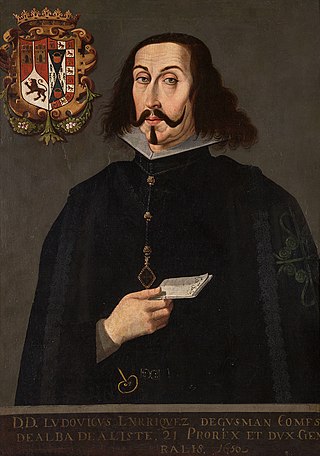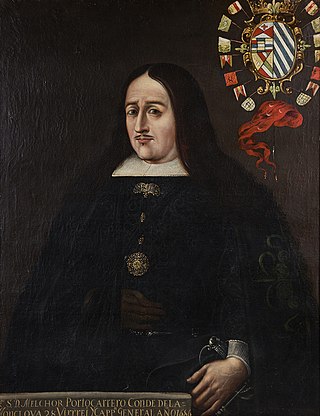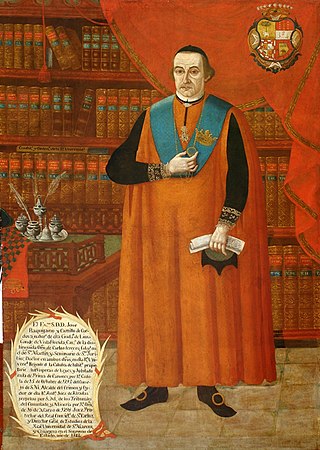Pedro Antonio Fernández de Castro | |
|---|---|
 | |
| 19th Viceroy of Peru | |
| In office November 21, 1667 –December 6, 1672 |
| Ancestors of Pedro Antonio Fernández de Castro, 10th Count of Lemos | |||||||||||||||||||||||||||||||||||||||||||||||||||||||||||||||||||||||||||||||||||||||||||||||||||||||||||||||||||||||||||||||||||||||||||||||||||||||||||||||||||||||||||||||||||||||||||||||||||||||||||||||||||||||||||||||||||||||||||||||||||||||||||||||||||||||||||||||||||||||||
|---|---|---|---|---|---|---|---|---|---|---|---|---|---|---|---|---|---|---|---|---|---|---|---|---|---|---|---|---|---|---|---|---|---|---|---|---|---|---|---|---|---|---|---|---|---|---|---|---|---|---|---|---|---|---|---|---|---|---|---|---|---|---|---|---|---|---|---|---|---|---|---|---|---|---|---|---|---|---|---|---|---|---|---|---|---|---|---|---|---|---|---|---|---|---|---|---|---|---|---|---|---|---|---|---|---|---|---|---|---|---|---|---|---|---|---|---|---|---|---|---|---|---|---|---|---|---|---|---|---|---|---|---|---|---|---|---|---|---|---|---|---|---|---|---|---|---|---|---|---|---|---|---|---|---|---|---|---|---|---|---|---|---|---|---|---|---|---|---|---|---|---|---|---|---|---|---|---|---|---|---|---|---|---|---|---|---|---|---|---|---|---|---|---|---|---|---|---|---|---|---|---|---|---|---|---|---|---|---|---|---|---|---|---|---|---|---|---|---|---|---|---|---|---|---|---|---|---|---|---|---|---|---|---|---|---|---|---|---|---|---|---|---|---|---|---|---|---|---|---|---|---|---|---|---|---|---|---|---|---|---|---|---|---|---|---|---|---|---|---|---|---|---|---|---|---|---|---|---|---|---|---|
| |||||||||||||||||||||||||||||||||||||||||||||||||||||||||||||||||||||||||||||||||||||||||||||||||||||||||||||||||||||||||||||||||||||||||||||||||||||||||||||||||||||||||||||||||||||||||||||||||||||||||||||||||||||||||||||||||||||||||||||||||||||||||||||||||||||||||||||||||||||||||
Pedro Antonio Fernández de Castro | |
|---|---|
 | |
| 19th Viceroy of Peru | |
| In office November 21, 1667 –December 6, 1672 |
| Ancestors of Pedro Antonio Fernández de Castro, 10th Count of Lemos | |||||||||||||||||||||||||||||||||||||||||||||||||||||||||||||||||||||||||||||||||||||||||||||||||||||||||||||||||||||||||||||||||||||||||||||||||||||||||||||||||||||||||||||||||||||||||||||||||||||||||||||||||||||||||||||||||||||||||||||||||||||||||||||||||||||||||||||||||||||||||
|---|---|---|---|---|---|---|---|---|---|---|---|---|---|---|---|---|---|---|---|---|---|---|---|---|---|---|---|---|---|---|---|---|---|---|---|---|---|---|---|---|---|---|---|---|---|---|---|---|---|---|---|---|---|---|---|---|---|---|---|---|---|---|---|---|---|---|---|---|---|---|---|---|---|---|---|---|---|---|---|---|---|---|---|---|---|---|---|---|---|---|---|---|---|---|---|---|---|---|---|---|---|---|---|---|---|---|---|---|---|---|---|---|---|---|---|---|---|---|---|---|---|---|---|---|---|---|---|---|---|---|---|---|---|---|---|---|---|---|---|---|---|---|---|---|---|---|---|---|---|---|---|---|---|---|---|---|---|---|---|---|---|---|---|---|---|---|---|---|---|---|---|---|---|---|---|---|---|---|---|---|---|---|---|---|---|---|---|---|---|---|---|---|---|---|---|---|---|---|---|---|---|---|---|---|---|---|---|---|---|---|---|---|---|---|---|---|---|---|---|---|---|---|---|---|---|---|---|---|---|---|---|---|---|---|---|---|---|---|---|---|---|---|---|---|---|---|---|---|---|---|---|---|---|---|---|---|---|---|---|---|---|---|---|---|---|---|---|---|---|---|---|---|---|---|---|---|---|---|---|---|---|
| |||||||||||||||||||||||||||||||||||||||||||||||||||||||||||||||||||||||||||||||||||||||||||||||||||||||||||||||||||||||||||||||||||||||||||||||||||||||||||||||||||||||||||||||||||||||||||||||||||||||||||||||||||||||||||||||||||||||||||||||||||||||||||||||||||||||||||||||||||||||||

The Viceroyalty of Peru officially known as the Kingdom of Peru was a Spanish imperial provincial administrative district, created in 1542, that originally contained modern-day Peru and most of the Spanish Empire in South America, governed from the capital of Lima. Peru was one of the two Spanish Viceroyalties in the Americas from the sixteenth to the eighteenth centuries.

Blasco Núñez Vela was the first Spanish viceroy of South America. Serving from May 15, 1544 to January 18, 1546, he was charged by Charles V with the enforcement of the controversial New Laws, which dealt with the failure of the encomienda system to protect the indigenous people of America from the rapacity of the conquistadors and their descendants.
A Real Audiencia, or simply an Audiencia, was an appellate court in Spain and its empire. The name of the institution literally translates as Royal Audience. The additional designation chancillería was applied to the appellate courts in early modern Spain. Each audiencia had oidores.

Don Luis Enríquez de Guzmán, 9th Count of Alba de Liste was viceroy of New Spain from June 28, 1650 to August 14, 1653 and thereafter viceroy of Peru, from February 24, 1655 to December 31, 1661).

Don Melchor Portocarrero y Lasso de la Vega, 3rd Count of Monclova was viceroy of New Spain from November 30, 1686 to November 19, 1688 and viceroy of Peru from August 1689 to 1705.

Lope García de Castro was a Spanish colonial administrator, member of the Council of the Indies and of the Audiencias of Panama and Lima. From September 2, 1564 to November 26, 1569 he was interim viceroy of Peru.

Francisco de Borja y Aragón, conde de Rebolledo, prince of Squillace was a Spanish writer, official in the court of King Philip III of Spain, and, from December 18, 1615 to December 31, 1621, viceroy of Peru.

Ana Francisca Hermenegilda de Borja y Doria, condesa de Lemos (1640–1706) was the wife of Peruvian Viceroy Pedro Antonio Fernández de Castro, conde de Lemos. During his five-month absence from the capital, she was governor of the Viceroyalty. She thus became the first female governor of the Viceroyalty of Peru.
Doctor Juan Jiménez de Montalvo was an oidor (judge) of the Royal Audiencia of Lima, and briefly in 1621 and 1622, interim viceroy of Peru.
Bernardo de Iturriaza was a Spanish judge and colonial official. In his capacity as president of the Audiencia of Lima he twice served as governor of Peru.

José Javier de Baquíjano y Carrillo de Córdoba, III Count of Vistaflorida was a Spanish/Peruvian economist and jurist, writer and politician, and one of the first great intellectuals of the Viceroyalty of Peru.

Francisco Gil de Taboada y Lemos was a Spanish naval officer and colonial administrator in South America. He was briefly viceroy of New Granada in 1789, and from March 25, 1790 to June 6, 1796 he was viceroy of Peru. After his viceregal service he returned to Spain, where he became a member of the governing junta after King Ferdinand VII was forced to abdicate by Napoleon. He was director general of the Spanish Royal Navy.

Gabriel de Avilés Itúrbide y del Fierro, 4th Marquis of Avilés was a Spanish military officer and colonial administrator in the Americas. He was governor of Chile, viceroy of Río de la Plata, and viceroy of Peru.
Tomás de Torrejón y Velasco Sánchez was a Spanish composer, musician and organist based in Peru, associated with the American Baroque.

The House of Castro is an Iberian noble lineage present in the since the Middle Ages in the kingdoms of Castile, Galicia, and Portugal. Though its exact origins are disputed, the House of Castro became one of the most powerful families of the Spanish and Portuguese nobility.

Andrés Hurtado de Mendoza y Cabrera, 3rd Marquis of Cañete was a Spanish military officer and, from June 29, 1556 to his death on March 30, 1561, the third Viceroy of Peru.

Francisco Ruiz de Castro y de Sandoval-Rojas, was a Spanish nobleman and politician the 8th count of Lemos.

Pedro Fernández de Castro y Andrade (1576–1622), better known as the Great Count of Lemos, was a Galician (Spanish) nobleman who was viceroy of Naples from 1608, and was also president of the Council of the Indies.
The Cuzco Rebellion of 1814 was an episode of the Peruvian War of Independence led by the Angulo brothers and Mateo Pumacahua that took place in much of the province of Cuzco, including Huamanga, Arequipa and Puno, as well as part of the province of Charcas. The uprising involved the proclamation of the autonomy and self-government of Cuzco from the Viceroyalty of Peru, governed by Viceroy José Fernando de Abascal y Sousa. The junta was modelled and intended to follow the steps of the Junta of Buenos Aires.

Count of Mayalde is a noble title created in 1596 by King Philip II of Spain for Juan de Borja y Castro son of Saint Francis Borgia, 1st Marquis of Lombay.